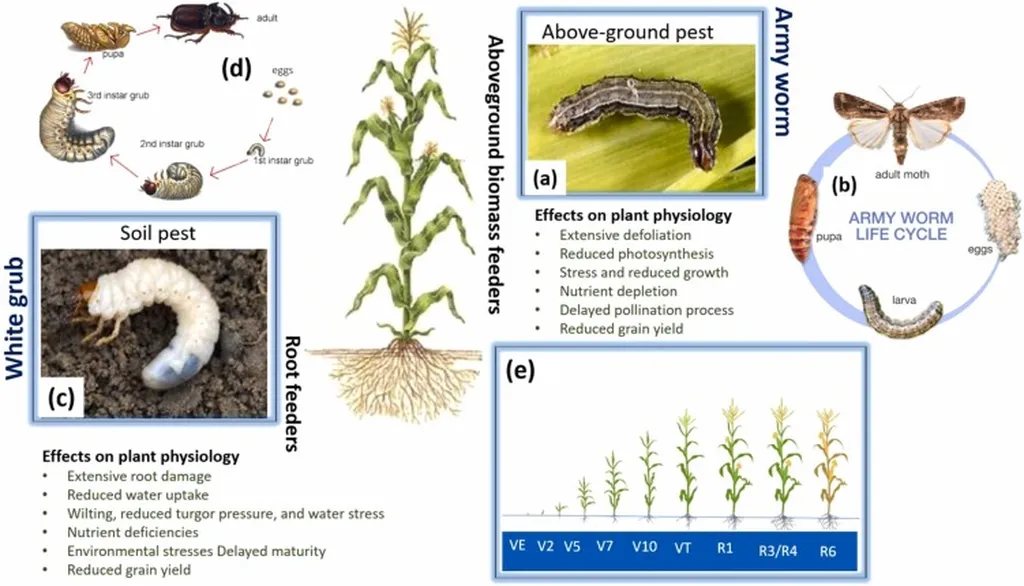In the relentless battle against crop-damaging pests, farmers and researchers are turning to cutting-edge technology to stay ahead. A recent study published in *Frontiers in Plant Science* introduces a promising new tool in the fight against the fall armyworm (*Spodoptera frugiperda*), a notorious pest that threatens global maize production. By harnessing the power of machine learning, researchers have developed a forecasting system that could revolutionize pest management and safeguard maize yields.
The fall armyworm, known for its rapid life cycle and extensive host range, has wreaked havoc on maize crops worldwide. Traditional pest control methods often rely on reactive measures, which can be costly and environmentally damaging. However, a team led by Vani Sree Kalisetti from the Maize Research Centre at Professor Jayashankar Telangana Agricultural University in Hyderabad, India, has taken a proactive approach. Their research focuses on predicting fall armyworm outbreaks using a combination of pheromone trap data and climate variables.
The team collected weekly pheromone trap counts from 2019 to 2023 and integrated them with weather data, including air temperature, relative humidity, and rainfall. They then evaluated three machine learning models: Integer Valued GARCH with Exogenous Variables (INGARCHX), Support Vector Regression with climate inputs (SVRX), and Artificial Neural Network with climate inputs (ANNX). The results were impressive.
During the training phase, the ANNX model outperformed its counterparts, achieving a mean square error of 0.42 and a root mean square error of 0.65. This performance was significantly better than the SVRX model, which recorded a mean square error of 7.29 and a root mean square error of 2.70, and the INGARCHX model, which showed a mean square error of 2.91 and a root mean square error of 1.70. The ANNX model continued to excel during testing, yielding a mean squared error of 25.13 and a root mean squared error of 5.01. The SVRX and INGARCHX models recorded scores of 34.07 and 5.84, and 48.90 and 6.99, respectively.
Diebold–Mariano tests confirmed that the ANNX model’s superior performance was statistically significant at the 5% level. “By integrating climate variables, this neural network is a dependable early-warning system that predicts fall armyworm population surges with roughly 80% accuracy, one week ahead,” Kalisetti explained. This timely and geographically targeted forecasting allows for precise pest-control actions, minimizing maize yield losses and advancing sustainable agricultural strategies.
The commercial implications of this research are substantial. Maize is a staple crop for millions of farmers worldwide, and the fall armyworm poses a significant threat to their livelihoods. By providing accurate and timely predictions, this forecasting system can help farmers implement targeted pest control measures, reducing the need for broad-spectrum pesticides and minimizing environmental impact. This not only improves crop yields but also promotes sustainable agricultural practices.
The study’s findings could also pave the way for future developments in the field of smart agriculture. As machine learning algorithms become more sophisticated, their applications in pest management and crop monitoring are likely to expand. Researchers may explore integrating additional data sources, such as satellite imagery and soil sensors, to enhance the accuracy and reliability of these forecasting systems.
In conclusion, the research led by Vani Sree Kalisetti represents a significant step forward in the fight against the fall armyworm. By leveraging the power of machine learning and climate data, this forecasting system offers a proactive and sustainable approach to pest management. As the agricultural sector continues to embrace smart technologies, such innovations will play a crucial role in ensuring food security and promoting sustainable farming practices.

